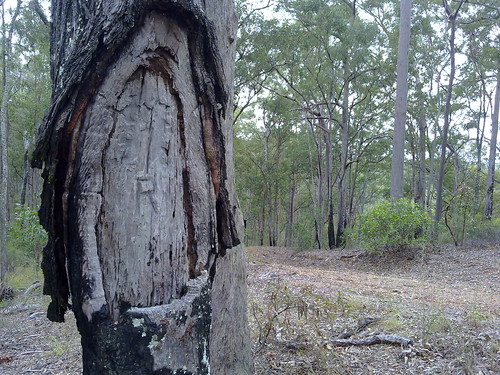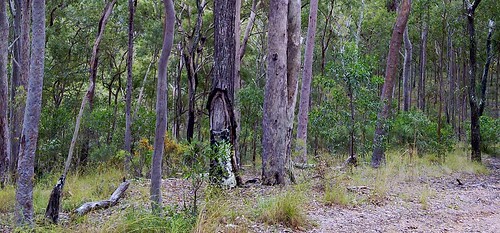Wights Mountain has one of the best preserved Aboriginal Ceremonial Bora Grounds in our area.
I didn’t have a wide-angled camera, so I had to stitch the photos together. Can you make out the raised ring of earth?
The Bora Grounds consisted of one large ring in which important tribal ceremonies were conducted, and a second secret ring where young initiates were taken to learn “mens business”. The two rings are connected by a sacred pathway approximately 400m long.
As I stood by the large ring, I imagined what it would have been like to stand here hundreds of years ago in the firelight as the tribe sang their songs, and young boys became men – learning secrets handed down for generations.
I felt a sense of loss.
European history is almost clinical. It has been chronicled in books for centuries for anyone to read. Aboriginal history is different. To learn it you needed to have a relationship to the person telling it to you, and a personal commitment to the community. We’ll never know many of the stories and secrets told here – they died with the story tellers.
I’ve only photographed the larger ring. I didn’t think it was respectful to photograph the smaller ring. If you want to see that, you’ll need to go to Wights Mountain yourself!


Here’s a diorama at the Samford Historical Museum depicting how the Bora Ring would have been used by the local Aboriginal people.



There are several Marked Trees at the Bora Grounds. One of these is obviously a Government Survey Tree (marked with an “R” and a number). I’m not sure whether the other trees are survey trees, or have been “marked” by Aborigines to signify the importance of the site. I’ll update the information when I find out.
Total climbing: 1340 m
Average temperature:
Total time: 05:38:40
More data



























